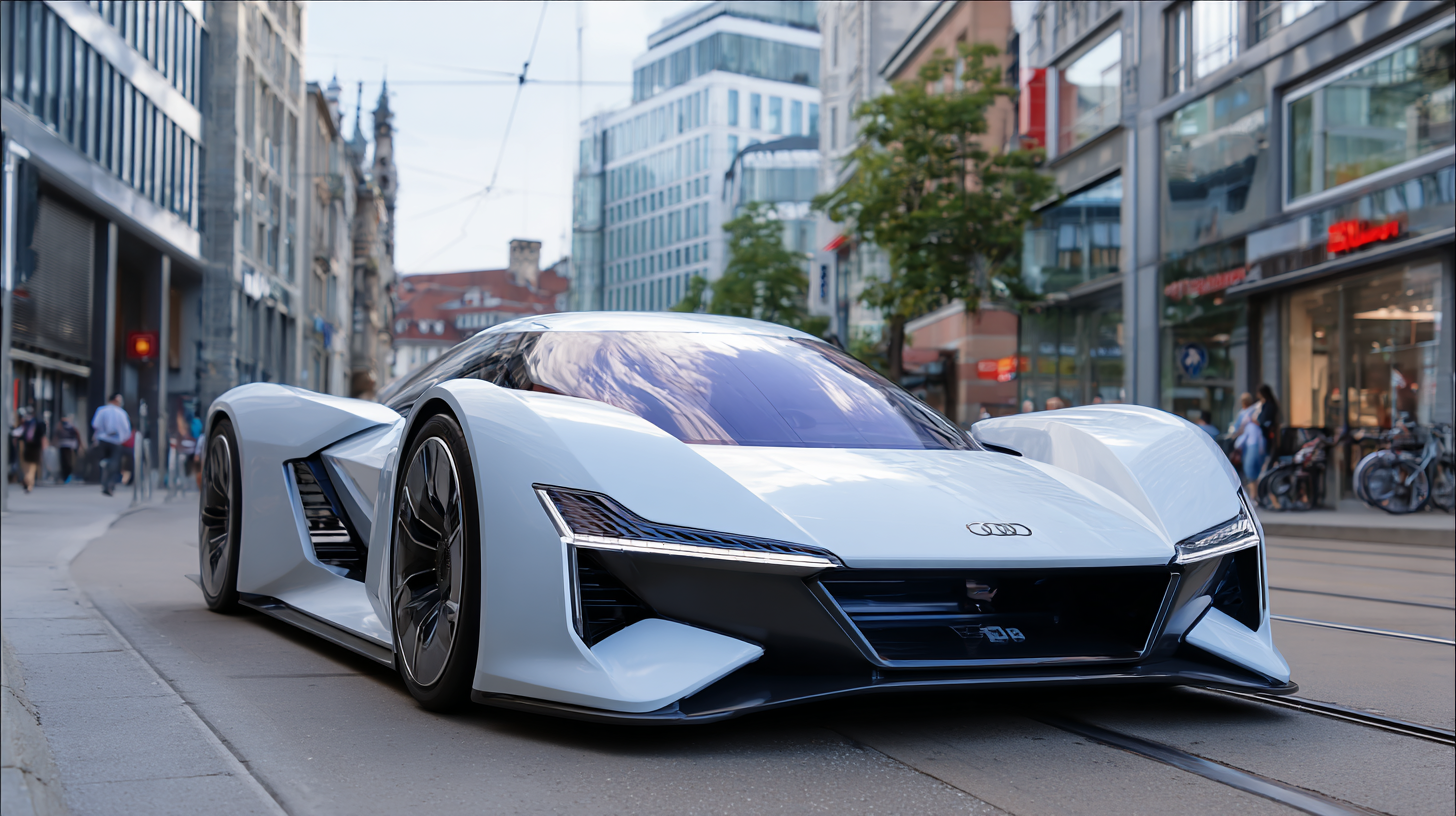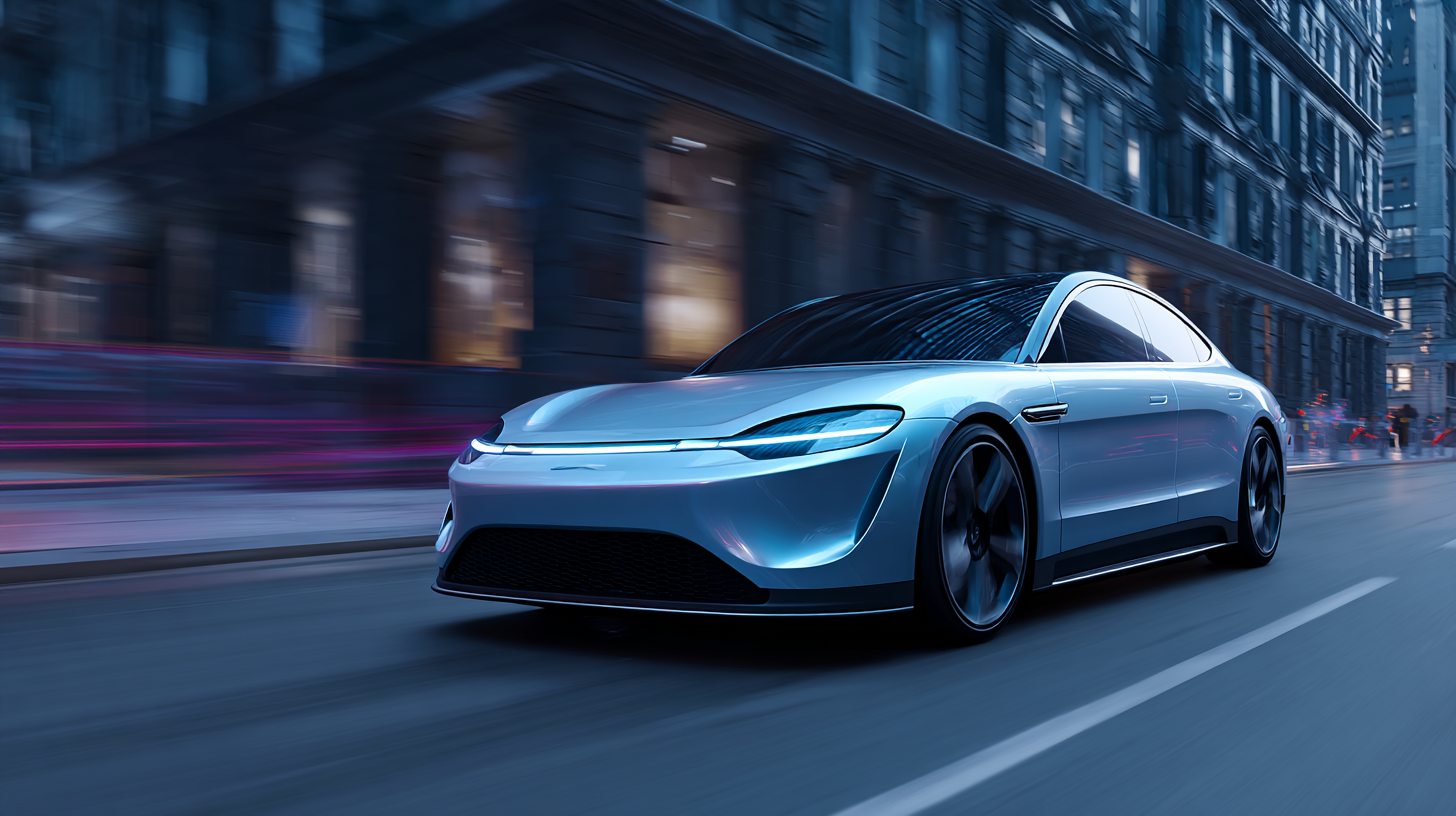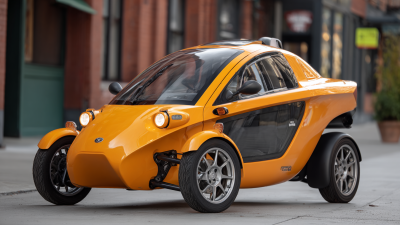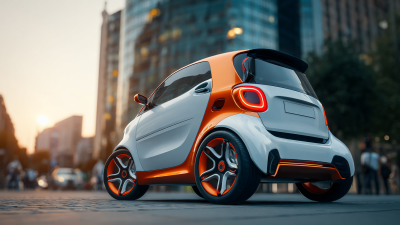Unleashing the Future: How Faster Electric Cars are Revolutionizing Urban Mobility
The rise of faster electric cars is set to redefine urban mobility, significantly impacting how we navigate our cities. According to a recent report by the International Energy Agency (IEA), the global electric vehicle market is projected to grow at an astonishing rate, with electric cars expected to make up 30% of new car sales by 2030. With advancements in battery technology and charging infrastructure, these vehicles are not only accelerating in performance but also in adoption.
 Faster electric cars, which can reach 60 mph in under four seconds, are becoming increasingly appealing to consumers, enhancing their daily commutes while reducing congestion and emissions in urban environments. As cities worldwide strive for sustainability, the integration of faster electric cars into public transportation and personal use presents a promising solution to old mobility challenges, aligning with goals to create cleaner, smarter cities.
Faster electric cars, which can reach 60 mph in under four seconds, are becoming increasingly appealing to consumers, enhancing their daily commutes while reducing congestion and emissions in urban environments. As cities worldwide strive for sustainability, the integration of faster electric cars into public transportation and personal use presents a promising solution to old mobility challenges, aligning with goals to create cleaner, smarter cities.
The Role of Electric Vehicle (EV) Technology in Urban Mobility Transformation
The transformation of urban mobility through electric vehicle (EV) technology is not only reshaping how we think about transportation but also significantly contributing to sustainability goals. According to the International Energy Agency (IEA), the global stock of electric cars surpassed 10 million in 2020, marking an annual growth rate of 43%. This rapid increase underscores the vital role EVs play in reducing urban congestion and minimizing greenhouse gas emissions. By 2030, it is projected that the number of electric buses alone will reach 600,000, creating a more efficient and eco-friendly public transport system.
Moreover, advancements in EV technology are enhancing the speed and convenience of urban travel. A report from McKinsey highlights that rapid developments in battery technology could lead to electric cars that not only achieve longer ranges but can also accelerate faster than their internal combustion counterparts. With the rise of fast charging infrastructure, which is expected to grow at a compound annual growth rate of 30% through 2025, urban dwellers will find it increasingly convenient to rely on electric vehicles. This shift promises to propel cities toward smarter, more efficient transportation networks that prioritize sustainability and accessibility for all residents.
Unleashing the Future: How Faster Electric Cars are Revolutionizing Urban Mobility
| Dimension | Description | Impact | Statistical Data |
|---|---|---|---|
| Charging Infrastructure | Availability of charging stations in urban areas | Increases adoption of electric vehicles | 70% urban areas have charging stations within 2 km |
| Vehicle Range | Distance electric cars can travel on a single charge | Reduces range anxiety for users | Average range increased to 300 miles |
| Sustainability | Reduction of carbon emissions through electrification | Improves urban air quality | Estimated 60% decrease in urban CO2 emissions by 2030 |
| Public Perception | Attitudes and acceptance of electric vehicles | Influences future purchasing decisions | Brand loyalty towards EVs increased by 25% |
| Government Incentives | Subsidies and tax breaks for electric vehicle buyers | Enhances affordability and adoption | Over $7 billion allocated worldwide in 2023 |
Analyzing the Impact of Accelerated EV Adoption on City Infrastructure Needs
The rapid adoption of electric vehicles (EVs) is not only transforming how we navigate urban environments but also necessitating significant changes in city infrastructure. With the US electric vehicle market projected to grow at a remarkable compound annual growth rate of 25.4% by 2032, cities are racing to adapt their infrastructure to accommodate this influx. The expansion of EV charging stations, particularly under accelerated development plans, is becoming a critical need to support the growing number of electric cars on the roads.

Furthermore, the emergence of vehicle-to-home (V2H) energy management systems highlights the need for a robust infrastructure that can integrate new technologies. These systems enable electric vehicles to not only draw power from the grid but also feed energy back into homes, thereby optimizing energy consumption and enhancing resilience. As urban areas continue to embrace efficient and clean modes of transportation, municipalities must strategically invest in charging facilities, smart grid technologies, and other necessary infrastructures to ensure a seamless transition into this electrified future.
Cost-Benefit Analysis: How Faster Electric Cars Are Reducing Urban Congestion
The cost-benefit analysis of faster electric cars highlights their potential to significantly reduce urban congestion, which is a
pressing issue in many metropolitan areas. As cities grow and populations increase, the demand for
efficient transportation solutions becomes critical. Faster electric vehicles (EVs) not only offer
reduced travel times but also lower emissions compared to traditional fossil fuel-powered cars. As a consequence, urban air quality improves, enhancing
overall public health and promoting sustainable living.
The global market for Urban Air Mobility (UAM) is projected to expand rapidly, with estimates indicating
that the market size will reach substantial figures by 2032. This includes various types of vehicles such as
electric taxis and air ambulances, catering to intercity and intracity travel needs. In addition, the rise of shared mobility services reflects a shift in
consumer behavior, with more people opting for convenient, on-demand transportation options. As infrastructure
continues to adapt and innovate, faster electric cars will play a pivotal role in shaping urban mobility, making cities more accessible while reducing congestion
and environmental impact.
Future Trends: Integrating Autonomous Electric Vehicles into Urban Transportation Systems
The integration of autonomous electric vehicles (AEVs) into urban transportation systems represents a paradigm shift in how cities approach mobility. As urban areas grapple with congestion, pollution, and the need for efficient transport solutions, AEVs offer a promising response. Equipped with advanced sensors and AI algorithms, these vehicles can navigate complex environments, optimizing traffic flow and reducing human error. This capability not only enhances safety but also facilitates smoother transit experiences for residents, allowing for a seamless connection between public transport and personal travel.

Moreover, the economies of scale introduced by autonomous technology can significantly reduce transportation costs. By enabling shared mobility services, AEVs can decrease the need for personal car ownership, leading to fewer vehicles on the road and, consequently, reduced environmental impact. Cities can leverage this technology to create smart transportation networks, integrating AEVs with existing infrastructure such as bike lanes, pedestrian zones, and public transit options. This holistic approach not only enhances urban mobility but also contributes to more sustainable and livable cities, reflecting a bright future where transportation is more efficient, accessible, and environmentally friendly.
Sustainability Metrics: The Environmental Benefits of Faster Electric Urban Mobility Solutions
The rise of faster electric cars is not just transforming urban mobility; it is also playing a significant role in improving sustainability metrics. According to the International Energy Agency (IEA), electric vehicles (EVs) produce significantly lower lifecycle emissions compared to their internal combustion engine counterparts. Specifically, EVs can reduce greenhouse gas emissions by as much as 70% over their lifespan, especially when charged with renewable energy sources. This reduction in emissions is critical for urban areas grappling with pollution and climate change.
Moreover, recent studies from the International Council on Clean Transportation (ICCT) indicate that the adoption of high-performance electric cars can further amplify these benefits. Specifically, the shift to EVs in urban fleets has the potential to decrease particulate matter emissions by approximately 50%, which can lead to marked improvements in air quality and public health. In densely populated metropolitan areas, where traffic congestion and emissions are highest, faster electric cars could usher in a new era of clean and efficient transportation.
Tips: When considering faster electric car options for your urban commute, look for models that maximize range and charging efficiency. Additionally, stay updated on local charging infrastructure developments to ensure seamless integration into your daily routines. Lastly, explore car-sharing services that utilize faster electric vehicles, as they can provide eco-friendly mobility solutions without the commitment of ownership.
Unleashing the Future: The Impact of Faster Electric Cars on Urban Mobility
This chart illustrates the evolving average speed of electric cars from 2020 to 2024, alongside the corresponding reduction in urban traffic density. As electric vehicles become faster and more efficient, urban mobility is increasingly improved, leading to less congestion and lower emissions.
Related Posts
-

7 Essential Tips for Choosing the Best Electric Trike for Adults
-

How to Choose the Best Tiny Two Seater Car for Urban Driving: Key Features and Market Insights
-

What Makes Small Electric Trikes a Game Changer in Urban Transportation
-

What Types of Electric Wagon Cars Are Revolutionizing Modern Transport?
-

Exploring the Future of Smart Car Electric Innovations Shaping the Automotive Industry
-

7 Essential Tips to Choose the Best Tricycle for Electric Mobility: A Data-Driven Guide







